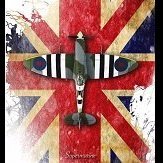Thanks for the suggested reading, Graham. I'll need to catch up on Soviet aircraft engineers and the Soviet engine developments.
Ref timeline, the D.550 first flew on 23 June 1939, MiG-1 first flew Apr 1940. The D.551, military derrivative of the D.550, was ordered in Dec '39 and the first 3 were ready for test flights in June 1940 when France capitulated.
Ref the strive for speed through aerodynamics, I've been trying to research the airfoil used on the D.550 / D.551, to no avail. It was clearly a thinner airfoil than the D.520 at 20% t/c ratio. The MiG-1 was 14% I believe and in keeping with lessons learned by Supermarine, Macchi, NACA & German aircraft designers. The Mig-3 (and I believe the MiG-1) also used the british Meredith effect with a buried radiator. From what I can tell, the D.550/551 did not. It was a fascinating time of innovation.


